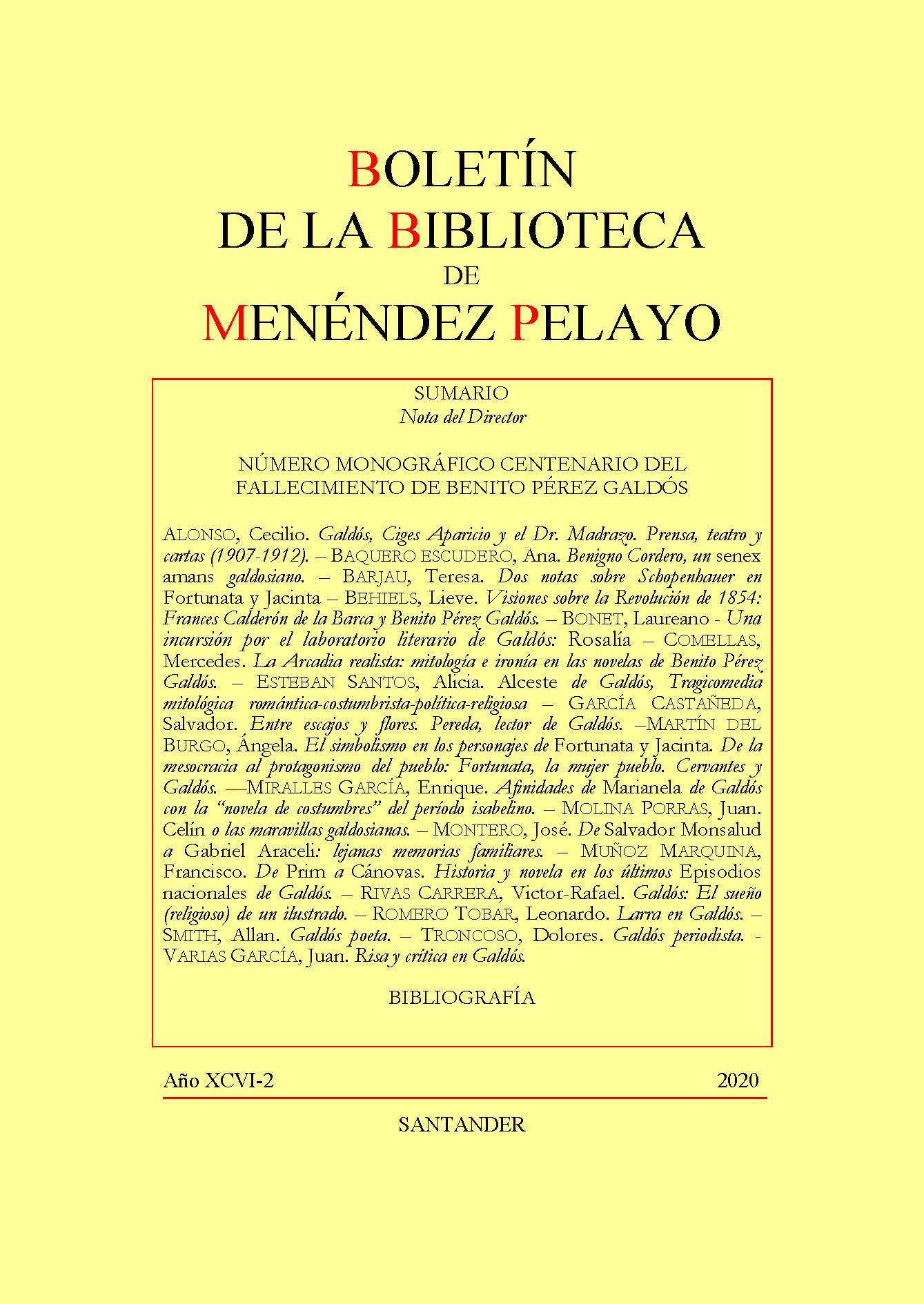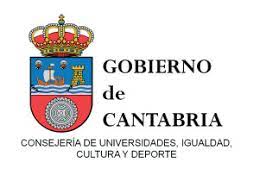Affinities of Marianela de Galdós with the «novel of customs» of the Elizabethan period
DOI:
https://doi.org/10.55422/bbmp.481Keywords:
XIX Century, Benito Pérez Galdós, Marianela, Compared Literature, Realistic Novel, Novel Of Customs, SymbolismsAbstract
The article wants to compare Marianela (1878), the last in the Galdós's series of "realistic novels", with the "novels of customs", one of the most prolific genres of the Elizabethan period. The comparative analysis highlights the common and differential factors between the two narrative modalities in order to clarify and assess the originality of the great novelist, within this literary context, based on antinomic measures, be it in the narrative resources, the social profiles of the characters, the structural axis of an account outside the intrigues that supernate by the folletinesque plots, thematic motifs in conflict and various small stories of lesser depth. This form of composition is what the author of Marianela takes into account, for the purpose of dismantling an agonizing paraliterary model and replacing it with a newer one, giving it a deep symbolism that emerges between the extremes of lyrical fabulation and reality prosaic, metaforizing the anthymity of physical/ideal beauty, vision/blindness, even mining landscapes, as they have been interpreting very notorious critics of a work subject to multiple interpretations. He doesn't quit, yet, Don Benito to certain argumental affinities offered by the novel of customs, such as in the thematic coincidences of his novel with a tale of W. Ayguals de Izco in The Palace of Crimes (1855), or in the social prototype of Nela, the orphan protagonist who lives in complete helplessness, only remediable with the happy educational solution of a positivism that could have led her to her good progress.
Downloads
Publication Facts
Reviewer profiles N/A
Author statements
Indexed in
- Academic society
- Sociedad Menéndez Pelayo
- Publisher
- Sociedad Menéndez Pelayo
Global Statistics ℹ️
|
247
Views
|
267
Downloads
|
|
514
Total
|
|
References
AGUINAGA, Magdalena. (ed.) (2000) B.P.G., Marianela. Madrid, Castalia Prima.
ALAS, Leopoldo («Clarín»). (1881) «Marianela». Solos de Clarín. Madrid. Alfredo de Carlos Hierro, editor. 235-242. (Leído en otra ed.)
ANDREU, Alicia G. (1982) Galdós y la literatura popular. Sociedad Española de Librería, S.A. Madrid. BLY, Peter A. (1972) «Egotism and charity in Marianela». Anales Galdosianos. VII. 49-66.
BORRALLO-SOLÍS, Adela. (2016) «Monstruos y márgenes: reconsideración del capítulo final de Marianela de Benito Pérez Galdós». Anales galdosianos. 51. 11-24. DOI: https://doi.org/10.1353/ang.2016.0000
CASALDUERO, Joaquín. (1939) «Auguste Comte y Marianela», Smith CollegeStudies in Modern Languajes. Northampton (Mass.). XXI. 10-25.
CASALDUERO, Joaquín. (1970) Vida y obra de Galdós (18431920). Tercera edición revisada y aumentada. Madrid Gredos.
CAUDET, Francisco. (ed.) (2005) Benito Pérez Galdós, Marianela. Madrid. Cátedra. 3ª ed.
CHAMBERLIN, Vernon A. (2006) «The ‘ciego’ in the Novels of Galdós: Costumbrismo, Realism, Symbolism». Decimonónica. 3.2.
CLEMESSY, Nelly. (1990) «Proceso creativo de Felipín Centeno en Marianela». VV. AA. Actas del Tercer Congreso Internacional de Estudios Galdosianos. Las Palmas. Cabido Insular de Gran Canaria. II. 31-38.
CORREA, Gustavo. (1977) Realidad, ficción y símbolo en las novelas de Galdós. Madrid. Gredos.
DENDLE, Brian J. (1974) «Galdós, Ayguals de Izco and the Hellenic inspiration of Marianela», Weber, Robert J. (ed.), Galdós Studies II. Londres. Tamesis Books Limited. 1-11.
DENDLE, Brian J. (1993) «Marianela, el descubrimiento del nuevo mundo y las limitaciones de la ciencia». Ínsula: revista de letras y ciencias humanas. 561. 29-30.
EOFF H., Sherman. (1954) The novels of Pérez Galdós. The concept of life as dynamic process. Washington University. 1954.
FARRAG, Hayam. (2005) «La mujer fea en la narrativa de Benito Pérez Galdós en Marianela y El árbol de la miseria». Isidora. Revista de estudios galdosianos. 17. 137-152.
GÓMEZ, Michael A. (2011) «The Molyneux Problem in Galdos's Manianela». Anales Galdosianos. 46. 47-66. DOI: https://doi.org/10.1353/ang.2011.0008
GÓMEZ-TABANERA José Manuel. (2011) «La llamada novela por entregas y su caracterización en la España del siglo XIX». en AA. VV., La literatura española del Siglo XIX y las literaturas europeas, V Coloquio de la Sociedad de Literatura Española del Siglo XI. Universidad de Barcelona. 161-178.
GREEN, Otis H. (1967) «Two Deaths: «Don Quijote and Marianela». Anales galdosianos. 2. 131-133.
HERRERA NAVARRO, Jerónimo. (1998) Bibliografia de estudios sobre Galdós. Madrid. Fundación Universitaria Española.
JONES, Cyril A. (1961) «Galdós’s Marianela and the Approach to Reality». Modern Language Review. LVI. 519. DOI: https://doi.org/10.2307/3721613
MADARIAGA, Benito. (1979) Pérez Galdós. Biografía Santanderina. Santander. Institución Cultural de Cantabria.
MILLER, Stephen. (1983) El mundo de Galdós. Teoría, tradición y evolución creativa del pensamiento socio-literario galdosiano. Santander. Sociedad Menéndez Pelayo.
MONTESINOS, José F. (1966) Introducción a una historia de la novela en España en el siglo XIX. Madrid. Castalia.
MONTESINOS, José F. (1968) Galdós. Madrid. Castalia.
ROMÁN GUTIÉRREZ, Isabel. (1988) Historia interna de la novela española del siglo XIX. Sevilla. Alfar.
RUIZ, Mario E. (1970) «El idealismo platónico en Marianela de Galdós», Hispania, 53.4. 870-880. DOI: https://doi.org/10.2307/337853
SCANLON, Geraldine M. (1990) «Problema social y krausismo en Marianela». VV. AA., Actas del Tercer Congreso Internacional de Estudios Galdosianos. Las Palmas. Cabido Insular de Gran Canaria. I. 81-95.
SHOEMAKER, William H. (ed.) (1972) Los artículos de Galdós en La Nación, 1865-66, 1868. Madrid. Ínsula.
SHOEMAKER, William H. (1980) Marianela. The Novelistic Arts of Galdós. Valencia. Albatros Ediciones. II. 86-103.
WELLINGTON, Marie A. (1968) «Marianela; nuevas dimensiones». Hispania. LI. 38-48. DOI: https://doi.org/10.2307/338020
YÁÑEZ, María Paz. (1994-1995) «El dilema discursivo en Marianela». Anales Galdosianos. XXIX-XXX. 51-61.
YNDURAIN, Francisco. (1970) Galdós entre la novela y el folletín. Madrid. Taurus Ediciones.
Downloads
Published
How to Cite
Issue
Section
License

This work is licensed under a Creative Commons Attribution-NonCommercial 4.0 International License.







